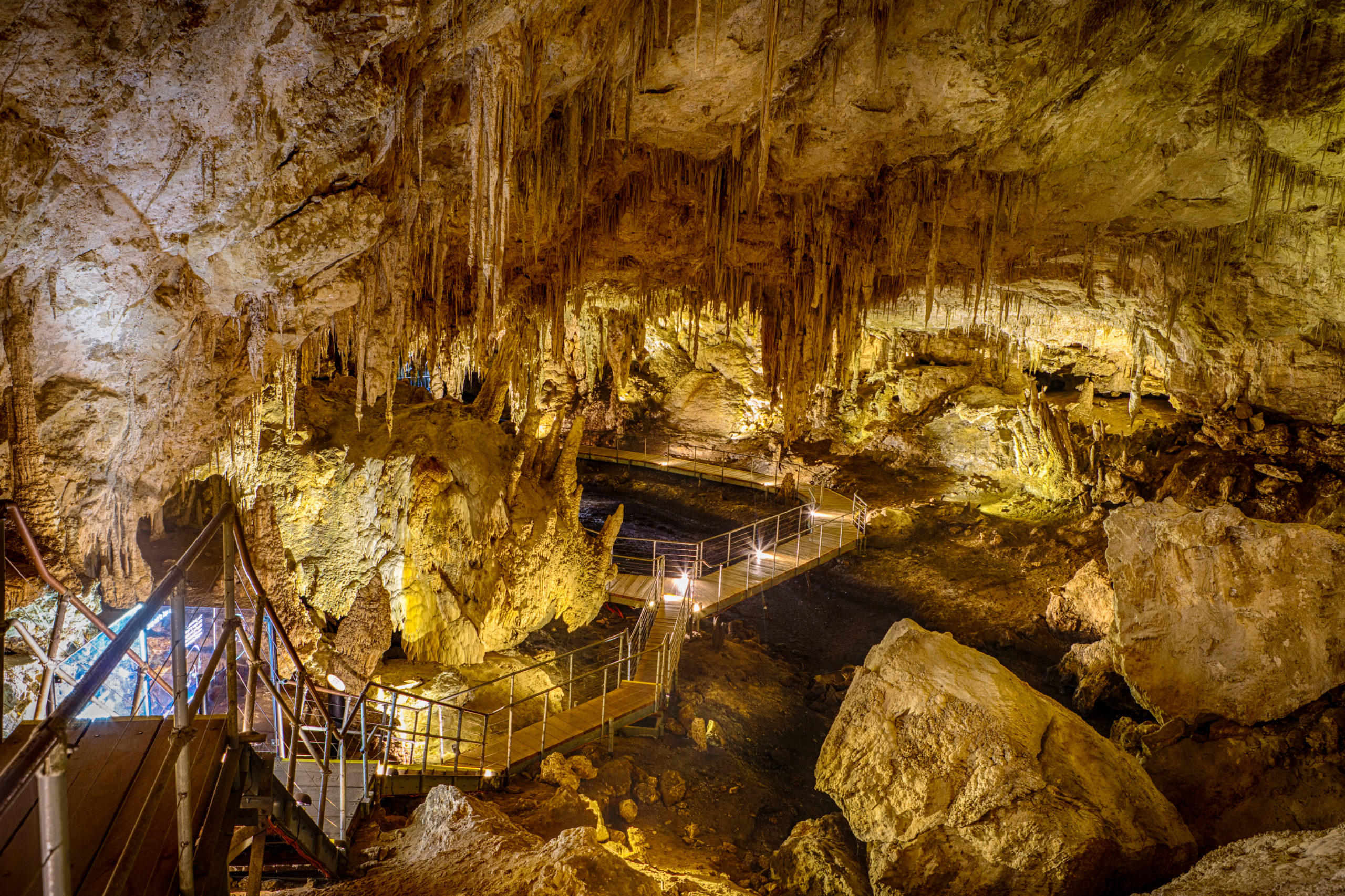A new study describes a “semiarboreal kangaroo” that lived 40,000 years ago in Australia. Apparently, even hopping can get boring.
According to the study, published this week in Royal Society Open Science, the discovery came from fossils excavated decades ago from Western Australia’s Mammoth Cave and the Thylacoleo Caves system. The skulls, teeth, and skeletons of the two extinct marsupials were originally identified as representing an Ice Age wallaby, Wallabia kitcheneri. The researchers posit that they are physically different, though, and instead allocate the fossils to the genus Congruus, which was previously just occupied by one fossil wallaby, Congruus congruus. They’re calling the newly identified animal Congruus kitcheneri.
“This discovery provides yet another reminder of just how little we understand of even the relatively recent geological past in Australia,” said co-author Gavin Prideaux, a paleontologist at Flinders University in Australia, in a Murdoch University press release.
[referenced id=”1047842″ url=”https://gizmodo.com.au/2017/06/giant-flying-turkeys-once-roamed-australia-because-of-course-they-did/” thumb=”https://gizmodo.com.au/wp-content/uploads/2017/06/15/x3dzm07k8w6jntngchtr-300×169.jpg” title=”Giant Flying Turkeys Once Roamed Australia Because Of Course They Did” excerpt=”Bird enthusiasts will be disappointed to know they were born millions of years too late. Palaeontologists from Flinders University in Australia have discovered five extinct megapode birds — among them, a giant brush-turkey called Progura gallinacea. The big bird was roughly the size of a kangaroo and weighed about 8kg…”]
Just as vast swathes of the northern hemisphere were covered in miles of ice sheets during the Pleistocene, stretches of Australia that are now arid were once forested and grassy. Thus, a palatable habitat for an animal that the study authors say was a long-necked herbivore.
Many paleontological discoveries in Australia come from its cave networks, which offer vivid looks into Pleistocene biodiversity. While the team distinguished this species through its cranial and dental features, they got clues to its behaviour from its forelimbs. Its humerus and ulna suggested the animal was extremely muscular (it had big pecs), had an increased range of motion that would allow it to raise its arms above its head (think: have you ever seen a modern kangaroo surrender?), and had big hands with massive, curved claws. (Curvature in digits is brought up as an adaptation for grabbing branches in other species, too.)

“This is really interesting, not just from the point of view of unexpected tree-climbing behaviour in a large wallaby, but also as these specimens come from an area that is now bare of trees,” said co-author Natalie Warburton, a paleontologist at Murdoch University in Perth, in the same release. “The habitat and environment in the area were really different to what they are now, and perhaps different to what we might have previously interpreted for that time.”
Other marsupial fossil finds in Australian caves similarly point to aspirations of life (or at least food) above ground. Marsupials in general have extremely robust upper bodies, as the jelly bean-like baby marsupials, born less developed than other mammals, have to climb into their parents’ pouch to continue their development. The recently described species is the latest evidence of the marsupial’s enduring evolutionary commitment to its upper body.
Congruus kitcheneri would not be the only kangaroo to master tree-climbing. That mantle is carried today by the 14 species of bizarrely adorable tree kangaroos, which look like they embarked on a joint evolutionary venture with red pandas and lemurs. The fossil kangaroo developed its tree-climbing traits separately, the authors said, meaning that two groups of kangaroos learned how to climb independently.
The newly described species was only semi-arboreal and would have moved slowly through the trees, according to the researchers. But for a creature five times larger than living tree kangaroos, it’s not a bad track record at all.
